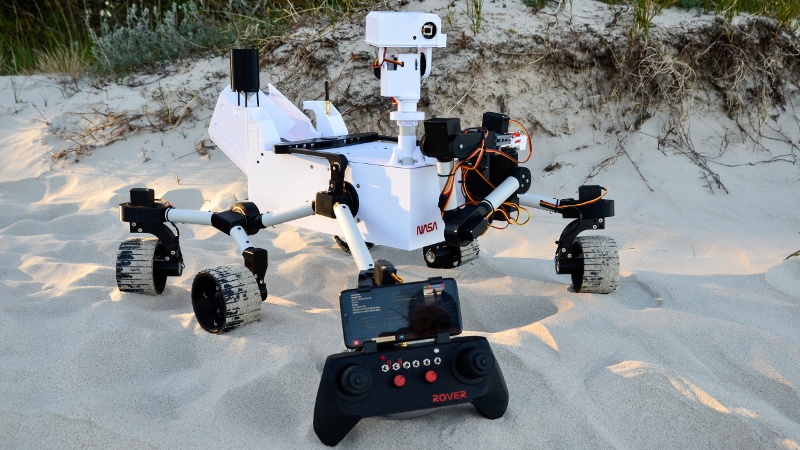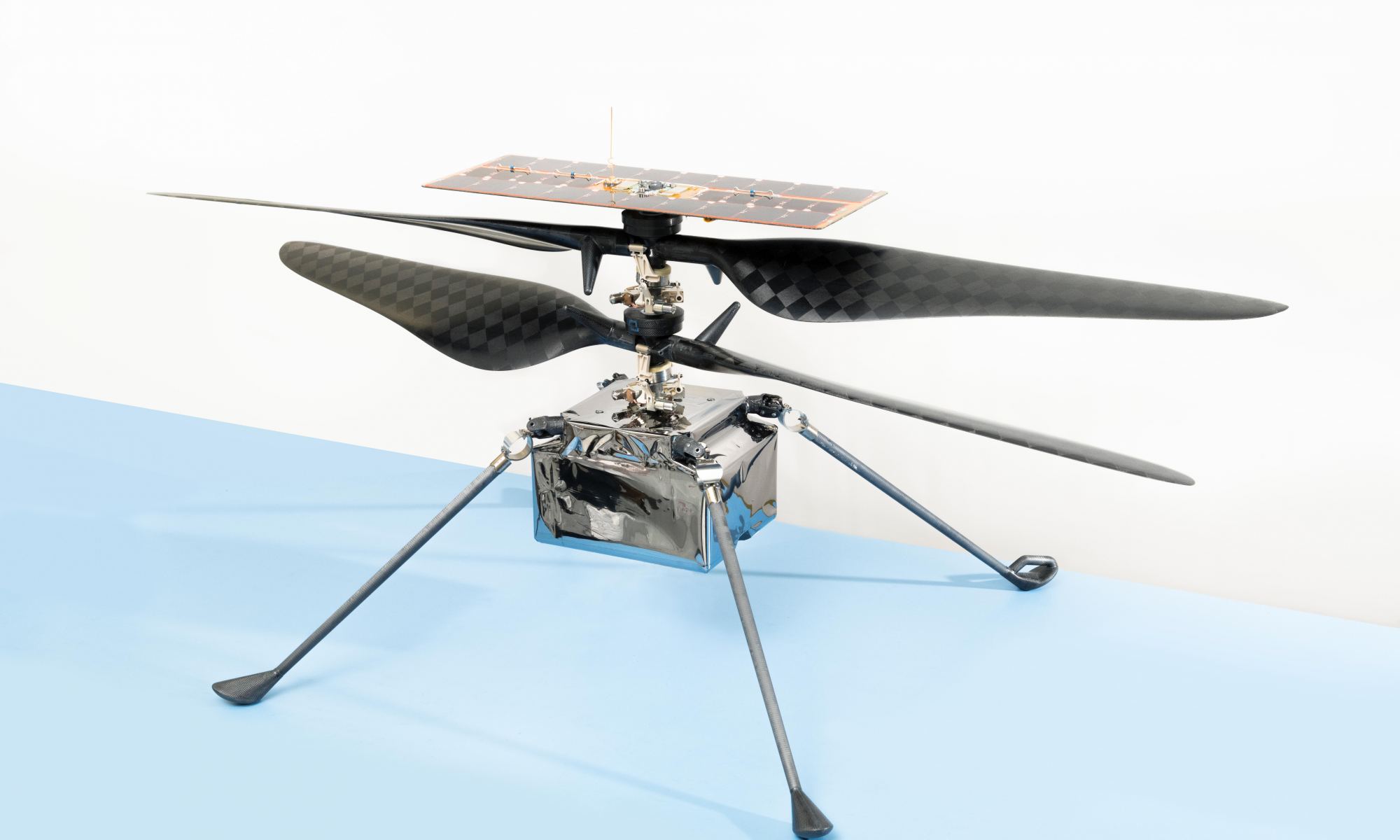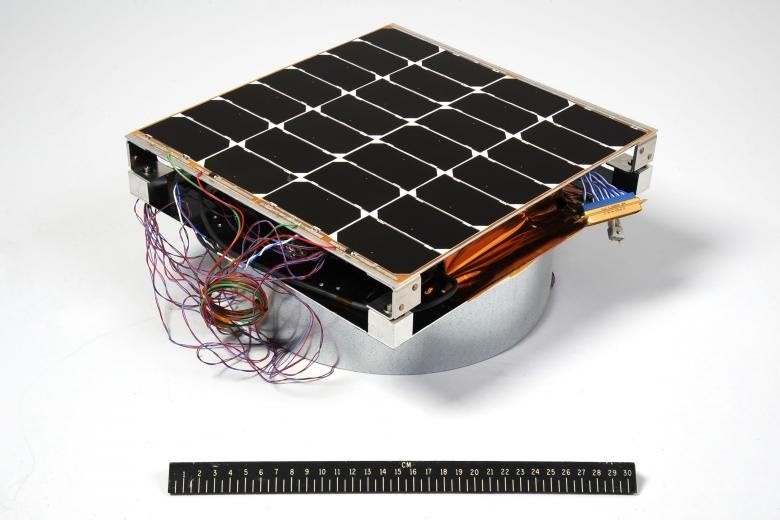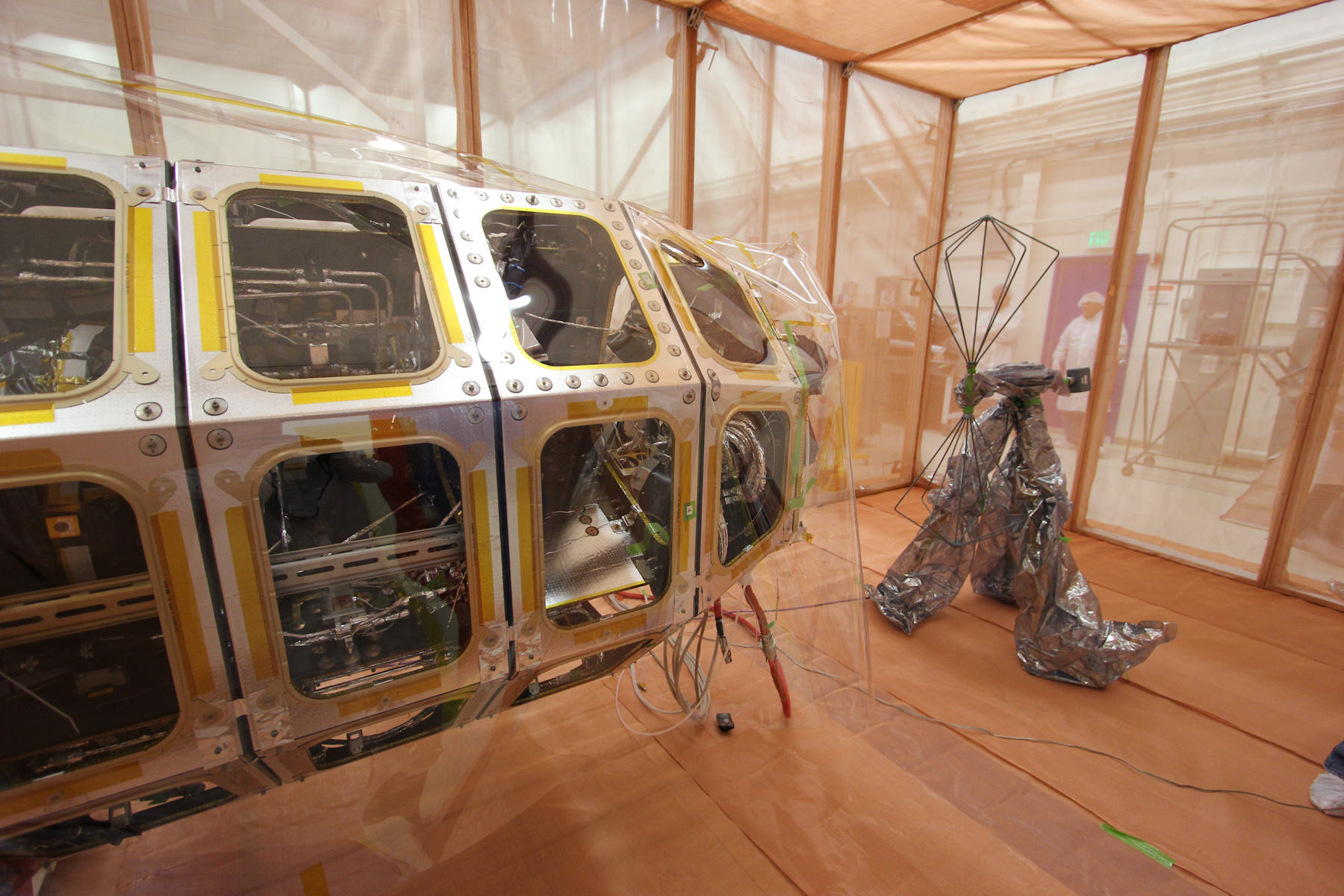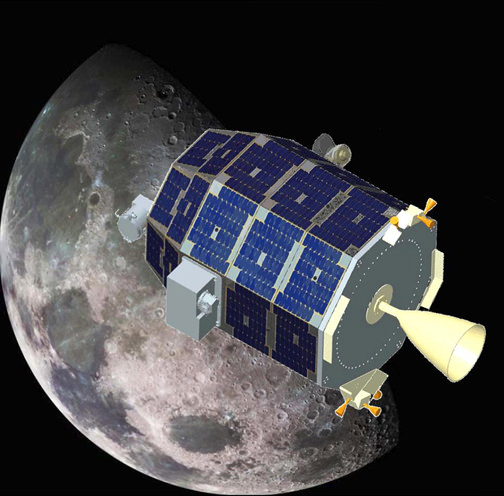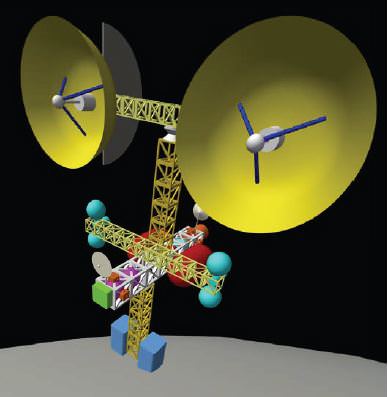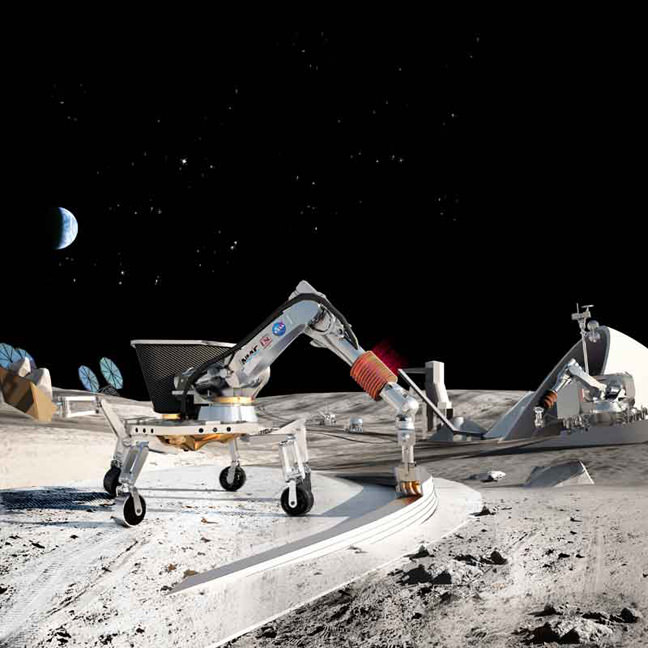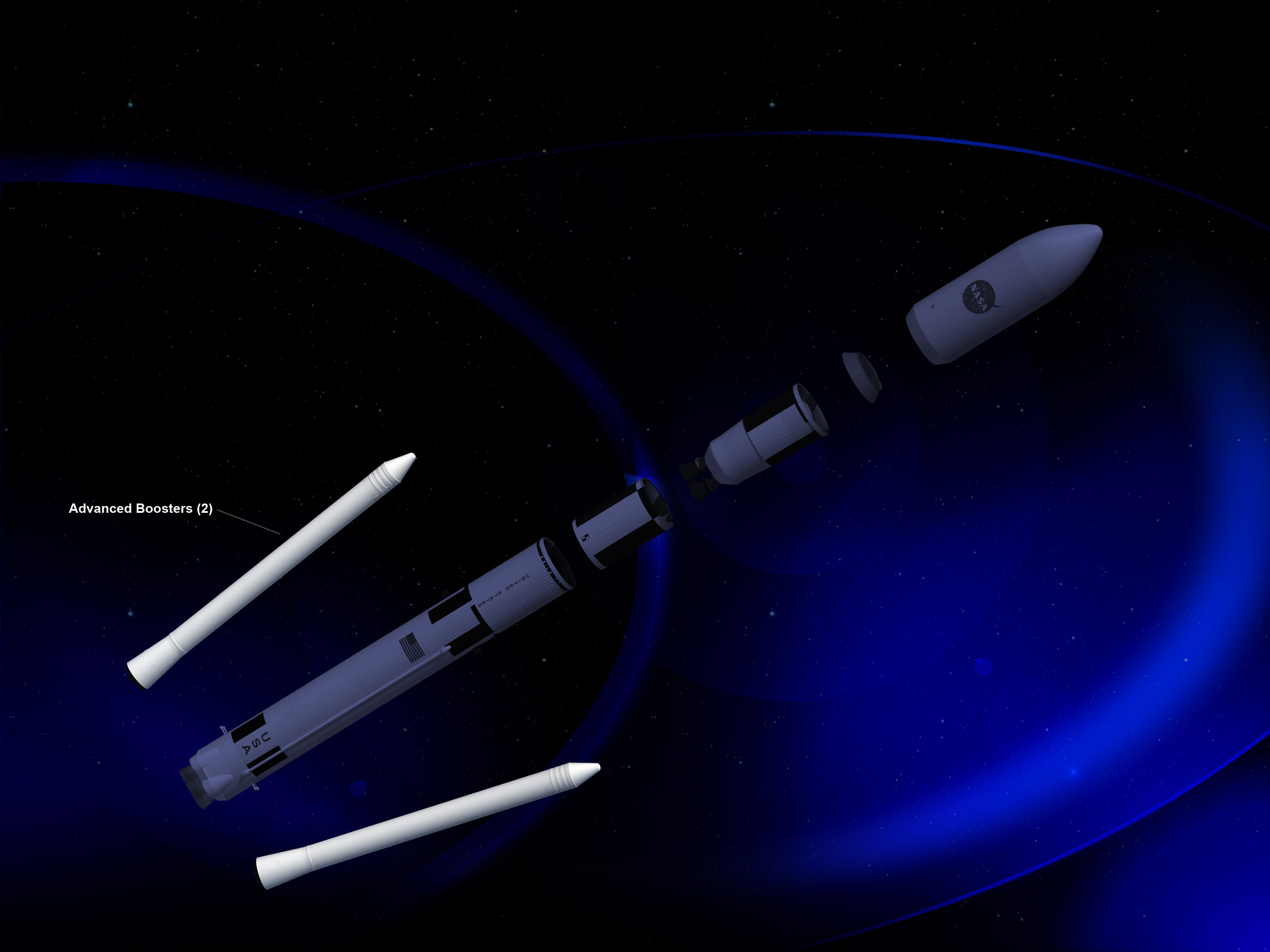The open source movement has been a fixture in the software and electronics worlds for over a decade now. Open source components serve as the basis from everything from 3D printed Iron Man figures to the Linux computer operating system. Now there’s a new open source project that ambitious creatives can undertake: building their very own Mars Curiosity Rover.
Continue reading “Now You Can Build Your Own Curiosity Rover”A Tabletop-sized Experiment Could Help in the Search for Dark Matter

Dark matter is one of the least understood aspects in physics. The evidence for dark matter is from its gravitational influence on galactic scales which cannot be explained by the presence of conventional matter. Despite its large gravitational interactions, it is notoriously difficult to learn about dark matter as it does not interact with electromagnetic fields, hence the name of “dark” matter.
But just because it is difficult to get it to interact with anything on the electromagnetic spectrum does not mean it is impossible to detect other feeble interactions it may have. A team of theoretical physicists from Caltech have recently proposed a novel type of experiment that may just hold the key to understanding dark matter with specific types of interactions.
Continue reading “A Tabletop-sized Experiment Could Help in the Search for Dark Matter”Here’s How Perseverance’s Helicopter Sidekick Will Deploy on Mars
When NASA’s new Perseverance Martian rover launches in a little over a month it will have a small robotic stow-away on board. Ingenuity is a small helicopter, with a fuselage about the size of a softball and two extending rotors that measure about 4 feet across. It was attached to the bottom of the rover’s chassis in April, and NASA recently released details about it’s technically challenging release process.
Before the team of NASA and Lockheed Martin engineers started designing the release mechanism though, they had to decide what Ingenuity’s mission would actually be. Ultimately, the helicopter will serve as the first powered experimental test flight on any extraterrestrial body. NASA is hoping it will be the first of many, leading to future helicopters on Mars that could allow mission scientists to peer into previously inaccessible places, such as craters and cliffs, from the air. If Ingenuity is successful, it could pave the way to many future air based scientific and scouting missions.
Continue reading “Here’s How Perseverance’s Helicopter Sidekick Will Deploy on Mars”Curiosity Sees Earth and Venus in the Night Skies on Mars
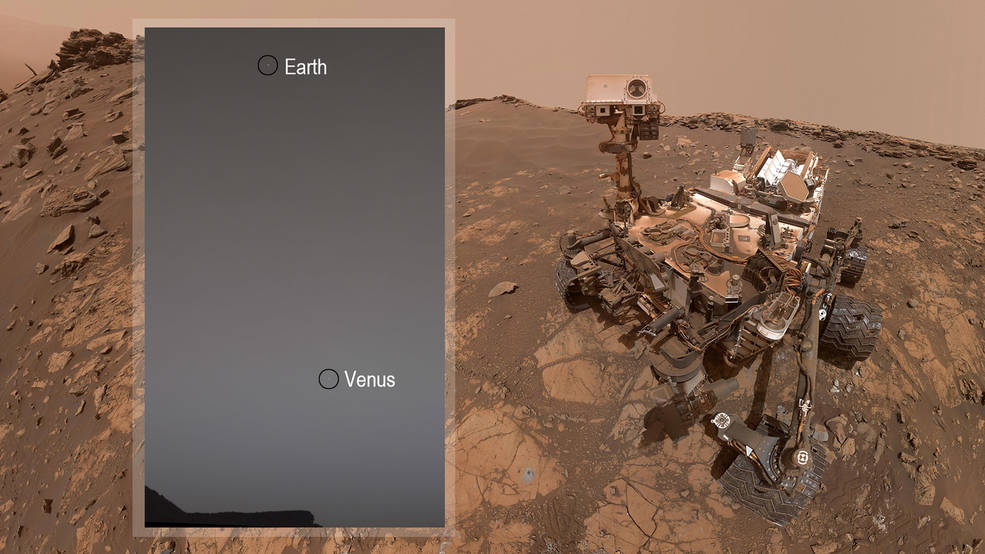
Normally the images from NASA’s Curiosity rover, currently sitting near “Bloodstone Hill” on Mars, are of alien vistas and rock outcroppings that conspiracy theorists constantly try to anthropomorphize into UFOs. However, the rover is also excellently positioned to capture a unique perspective of an alien sky. And that is exactly what it did recently when it captured an image of both Venus and Earth in the same Martian night sky. The images were actually taken in two separate frames, though the two planets were visible in the sky at the same time.
Continue reading “Curiosity Sees Earth and Venus in the Night Skies on Mars”The Navy is Testing Beaming Solar Power in Space
Solar power has become a focal point of the battle to mitigate climate change. The potential of solar power is massive – Earth receives as much solar energy in an hour as all of humanity uses in a year. Even with that much energy hitting the Earth, it is only a tiny fraction of the sun’s overall output. Some of that other solar energy hits other planets, but most is just lost to the void of deep space.
There are a number of groups that are leveraging various technologies to capture some of that lost energy. One of the most common technologies being pursued is the idea of the power satellite. Recently, one of those groups at America’s Naval Research Laboratory (NRL) hit a milestone in the development of power satellite technology by launching their Photovoltaic RF Antenna Module (PRAM) test satellite.
Continue reading “The Navy is Testing Beaming Solar Power in Space”Virgin Orbit’s first air-launched rocket launch fails
The reason people use the aphorism “it isn’t rocket science” is because rocket science is hard. Virgin Orbit, a spin-off of Virgin Galactic that focuses on small satellite launches, proved that with a recent test of its LauncherOne rocket.
Continue reading “Virgin Orbit’s first air-launched rocket launch fails”NASA Looks Towards Next Mission to the Moon
NASA’s Lunar Atmosphere and Dust Environment Explorer (LADEE) Observatory sits beside a radio frequency antenna inside an enclosure that blocks external static to detect electromagnetic emissions. Image credit: NASA Ames
With the GRAIL mission ending today, NASA is preparing for its next lunar orbiter mission, which could help pave the way for a potential future human mission to the Moon. While the Moon seems to be an ‘on-again-off-again’ potential human destination, as the GRAIL mission points out, studies of our closest neighbor in space continues to reveal surprises.
But if we are ever going to establish any sort of long-term presence on the Moon, scientists and engineers will have to understand more about the environmental conditions that they’re dealing with. Lunar dust is an environmental factor that requires much more exploration and study, as it may pose one of the biggest problems for humans on the Moon. Lunar dust is as fine as talcum powder and abrasive enough to cause long term problems to the lenses and seals central to the operation of mechanical equipment — not to mention hazards to human health — during any lengthy stay on the Moon.
Artist concept of the LADEE spacecraft in orbit at the Moon. Credit: NASA
To study this unique lunar environmental phenomenon, NASA is in the process of testing the Lunar Atmosphere and Dust Environment Explorer (LADEE) in preparations for its upcoming launch. Recently, LADEE integrated the last of its three main science instruments. The three instruments to be launched with the craft are the Ultraviolet and Visible Light Spectrometer, which will analyze the light signatures of the materials it detects on the Moon, the Neutral Mass Spectrometer, set to detect differences in what little atmosphere there is on the Moon over multiple orbits, and the Lunar Dust Experiment, which will collect and analyze any dust particles that are floating around the sparse atmosphere that LADEE will be flying in.
In addition to it’s science experiments, LADEE will be technically unique in a few ways. First, it is pioneering NASA’s Modular Common Bus architecture, which will hopefully increase the compatibility between future lunar spacecraft’s communications and power systems and thereby decrease their cost.
LADEE will also carry a “technology demonstration payload,” which will allow it to communicate with Earth using lasers rather than radio waves. This will dramatically increase the speed of information transfer between the spacecraft and its controllers, resulting in almost broadband-internet levels of data exchange. If this technology proves successful it is likely to be used on future lunar exploration missions as well.
LADEE is currently undergoing a battery of environmental tests. Acoustic, vibration, shock and thermal-vacuum test still await the spacecraft after it recently passed the electromagnetic interference test. Assuming it manages to keep its clean bill of health, the spacecraft could be launched on it’s 160 day mission as early as August 2013. With its help, humanity will have a better understanding of how to combat one of the most unfriendly aspects of the lunar environment.
Study Looks at Making Asteroid Mining Viable
Artist concept of the Robotic Asteroid Prospector. Credit: Marc Cohen et al.
There’s been a lot of buzz in the media lately about mining asteroids, largely brought on by the introduction of Planetary Resources, Peter Diamandis’ new venture into the industry. But is this business proposition actually viable? NASA’s Innovative Advanced Concepts is funding a study that hopes to answer that question.
Called the Robotic Asteroid Prospector proposal, the project is part of the NIAC’s Phase I program awardees. It is headed by Dr. Marc Cohen, an architect based in Palo Alto California, with help from Warren James, a trajectory expert, Kris Zacny, a roboticist at Honeybee Robotics and Brad Blair, a mineral economist. Their proposal studies the fundamentals of some major questions facing the asteroid mining industry. What kinds of mission and spacecraft design are necessary? Is the right kind of mining technology available? And most importantly, is there even a viable business model for doing it in the first place?
Dr. Cohen himself is skeptical that there is, but points out that’s part of the reason he’s so interested in performing the research. Contributing to his skepticism are the numerous assumptions the proposal is based on. These include a telescope in Venus orbit to help the search for near-Earth objects (one of NASA’s primary mission statements, and similar to the B612 Foundation’s space telescope that will hunt for Near Earth Asteroids) and regular commercial access to a service base located in a Lagrange point from which to launch the missions.
“We’re trying to make the assumptions really clear, specific and explicit, so we understand what the trade-offs are,” Dr. Cohen told Universe Today. “One thing we’re being very careful about is not going in with any preconceptions.”
The assumptions lead to a spacecraft design, possibly using a solar-thermal propulsion system, that launches to a NEO from the Lagrange point station, mines and processes the material at the asteroid and then returns it to the Lagrange point for shipment back to Earth.
Dr. Cohen explained that the team is trying to find the requirements that would make a robotic asteroid program commercially successful.
There are still plenty of challenges to solve, including developing trajectories that allow the spacecraft to make repeated, short trips to the asteroid it is mining and handling any sort of technical problems without a human presence nearby. If it manages to resolve some of those difficulties, the project could result in the outlines of one of the backbones of the future space economy. It might also attract funding for the Phase II round of funding from NIAC next year.
For more information about the RAP, see the NIAC website
NASA Looking at Dozens of Advanced Technology Concepts
The Contour Crafting Simulation Plan for Lunar Settlement Infrastructure Build-Up, a NIAC-supported concept.
Rendering courtesy of Behnaz Farahi and Connor Wingfield
All the media focus surrounding the recent landing of NASA’S rover Curiosity has brought increased attention to space technology. Just in time to bask in the limelight, NASA has delivered a tech enthusiast’s dream in terms of astounding new concepts that have recently been funded. They range in scope from nanosatellite technology to the exploration under the ice of Europa.
NASA’s Innovative and Advanced Concepts program announced on August 1st that it has funded 28 studies for the upcoming year. Eighteen of the studies are considered “Phase 1” projects, while ten are considered “Phase 2.”
Phase 1 projects are the new, innovative ideas that NASA received during its call for proposals. Some other conepts include an air purification system with no moving parts, and a system that could use in situ lunar regolith to autonomously build concrete structures on the Moon, as pictured above. Each of the winning proposals, from a pool of hundreds, will receive $100,000 to pursue the idea further. Each team will report back to NIAC at the end of the year with a report on their progress toward the goals of the project that were laid out in the proposal.
Phase 2 projects are pulled from the successful proposals from last year that reapplied for another grant. These projects have already made it through their Phase 1 development and will receive $500,000 for continuing research into the concept. These projects include such technologies as fusion-driven rockets and printable space-craft, and could move on to commercial or mission development if they successfully complete their Phase 2 goals. Other parts of NASA’s Office of the Chief Technologist will help support those goals, as the NIAC only supports project up through the completion of Phase 2.
The NIAC ties nicely into NASA’s new focus on the commercial side of space flight. Many of the concepts funded by the program could serve as the basis for viable commercial businesses, such as asteroid mining and robotic construction. But most importantly, NASA is still funding the risky, game-changing projects that could drastically transform the way people live their every-day lives. Tech enthusiasts everywhere should be happy with that concept.
You can see here for a list of the proposals. We’ll try to feature some of these in future articles.
NASA Making Strides with the New Space Launch System
In 2011, America lost the ability to send humans into space when NASA retired the shuttle program. Lately, there has been a burst of news about the commercial side of spaceflight and how private companies such as SpaceX and VirginGalatic will soon be able to take over where the shuttle left off. But that doesn’t mean NASA has given up the ability to send people into space forever and recently the agency has taken a few steps toward regaining that ability.
The Space Launch System (SLS) is NASA’s new platform for launching both humans and cargo into Earth orbit and beyond. With an eventual expected payload capacity of 130 metric tons it will theoretically be the most powerful rocket ever built. On July 25th, it hit a major milestone when it was officially upgraded by an independent review board from the “concept development“ phase of the project to the “preliminary design“ phase.
“The in-depth assessment confirm the basic vehicle concepts of the SLS, allowing the team to move forward and start more detailed engineering design.“ William Gerstenmaier of NASA’s Human Exploration and Operations Mission Directorate said. This puts the system on the path to the next milestone: the preliminary design review expected late next year.
That design review will cover a system that will likely be comprised of two five-stage rocket boosters like those that were used on the space shuttle. Since those boosters were only capable of achieving low-Earth orbit, NASA needed to add some extra power to the SLS in order to reach deep space where many of its missions will take place. Their solution is what is known as an “advanced booster“, essentially a late-stage chemical rocket that will fire well into in the ascent of the craft and carry it out of Earth’s gravity well.
The design process of the advanced boosters hit its own milestone on July 13th when NASA announced it had selected the proposals it will use to begin contract negotiations for the development of the system. This is the first step of NASA’s procurement process, with a possible total contract of $200 million spread between the companies that receive finalized contracts. Those companies will likely come from the pool of those selected in this first step. They include, Aerojet General Corp, ATK Launch Systems Inc, Northrop Grumman Systems Corporation – Aerospace Systems and Dynetics, Inc. Dynetics, based out of Huntsville, Alabama, came out the winner for this round of the contract competition, with three of its proposals moved on to the contract negotiation phase while ATK, Aerojet and Northrop had one each. The names of the proposals are:
– “Subscale Composite Tank Set“ – Northrop Grumman
– “F-1 Engine Risk Reduction Task“ – Aerojet General Corp
– “F-1 Engine Risk Reduction Task“ – Dynetics Inc.
– “Main Propulsion System Risk Reduction Task“ – Dynetics Inc.
– “Structures Risk Reduction Task“ – Dynetics Inc.
– “Integrated Booster Static Test“ – ATK Launch Systems Inc.
The next step of the process will require the awardees to come up with engineering demonstrations and risk reduction concepts for their proposals. Over a 30-month period, the companies will have to demonstrate their technology prior to completion of the competition for contracts in 2015. Engineers at NASA will then have some time to integrate the advanced booster system with the other SLS modules before the first test launch of the entire system in 2017. While NASA might not be able to take humans to the stars for the next few years, they are making strides towards that goal.
Lead image caption: Components of the Space Launch System, highlighting the advanced boosters. Credit: NASA

